
How to Use SparkFun LiPo Charger Basic - Micro-USB: Examples, Pinouts, and Specs
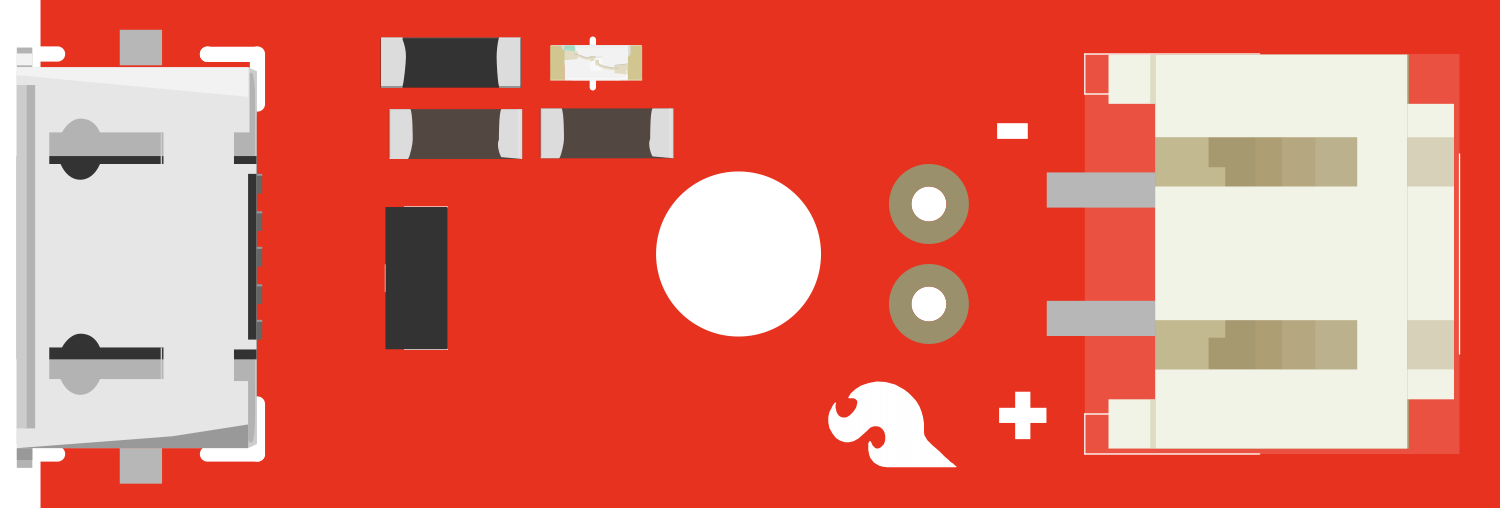
 Design with SparkFun LiPo Charger Basic - Micro-USB in Cirkit Designer
Design with SparkFun LiPo Charger Basic - Micro-USB in Cirkit DesignerIntroduction
The SparkFun LiPo Charger Basic - Micro-USB is a compact and easy-to-use charging solution for Lithium Polymer (LiPo) batteries. This component is designed to charge single-cell LiPo batteries with a nominal voltage of 3.7V. It is an essential tool for hobbyists, engineers, and makers who work with portable electronics, drones, or any project that requires a rechargeable power source. The charger uses a Micro-USB connection, which is widely available, making it convenient for users to charge their batteries from a computer, USB wall adapter, or even a portable power bank.
Explore Projects Built with SparkFun LiPo Charger Basic - Micro-USB
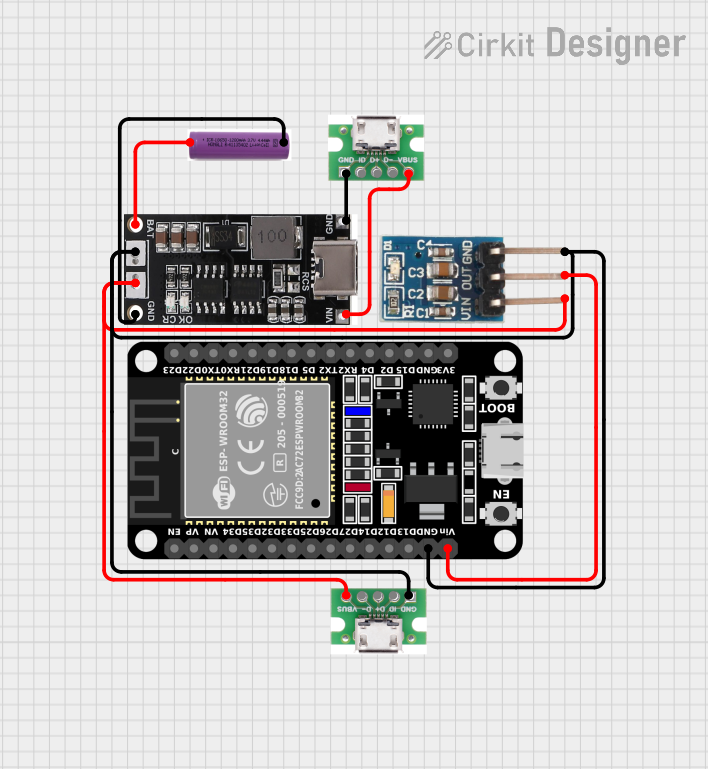
 Open Project in Cirkit Designer
Open Project in Cirkit Designer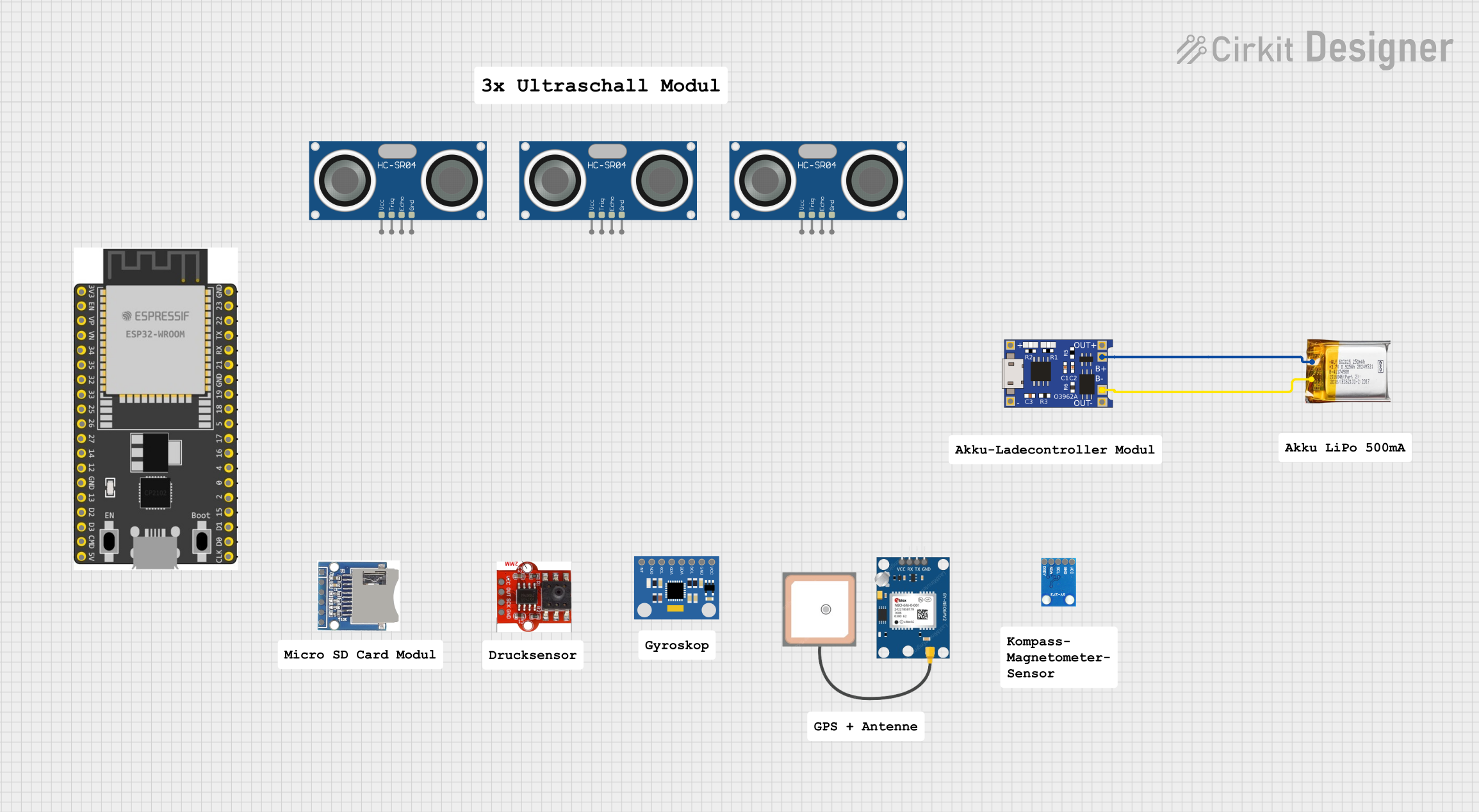
 Open Project in Cirkit Designer
Open Project in Cirkit Designer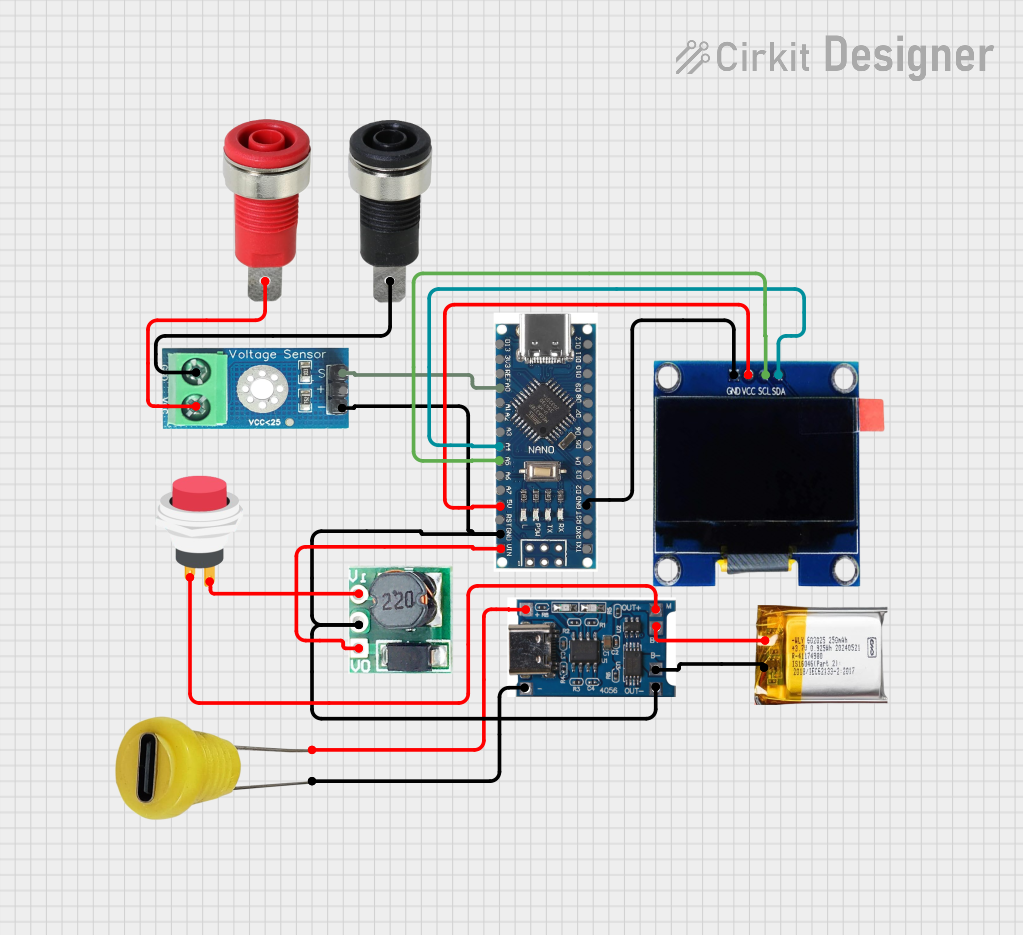
 Open Project in Cirkit Designer
Open Project in Cirkit Designer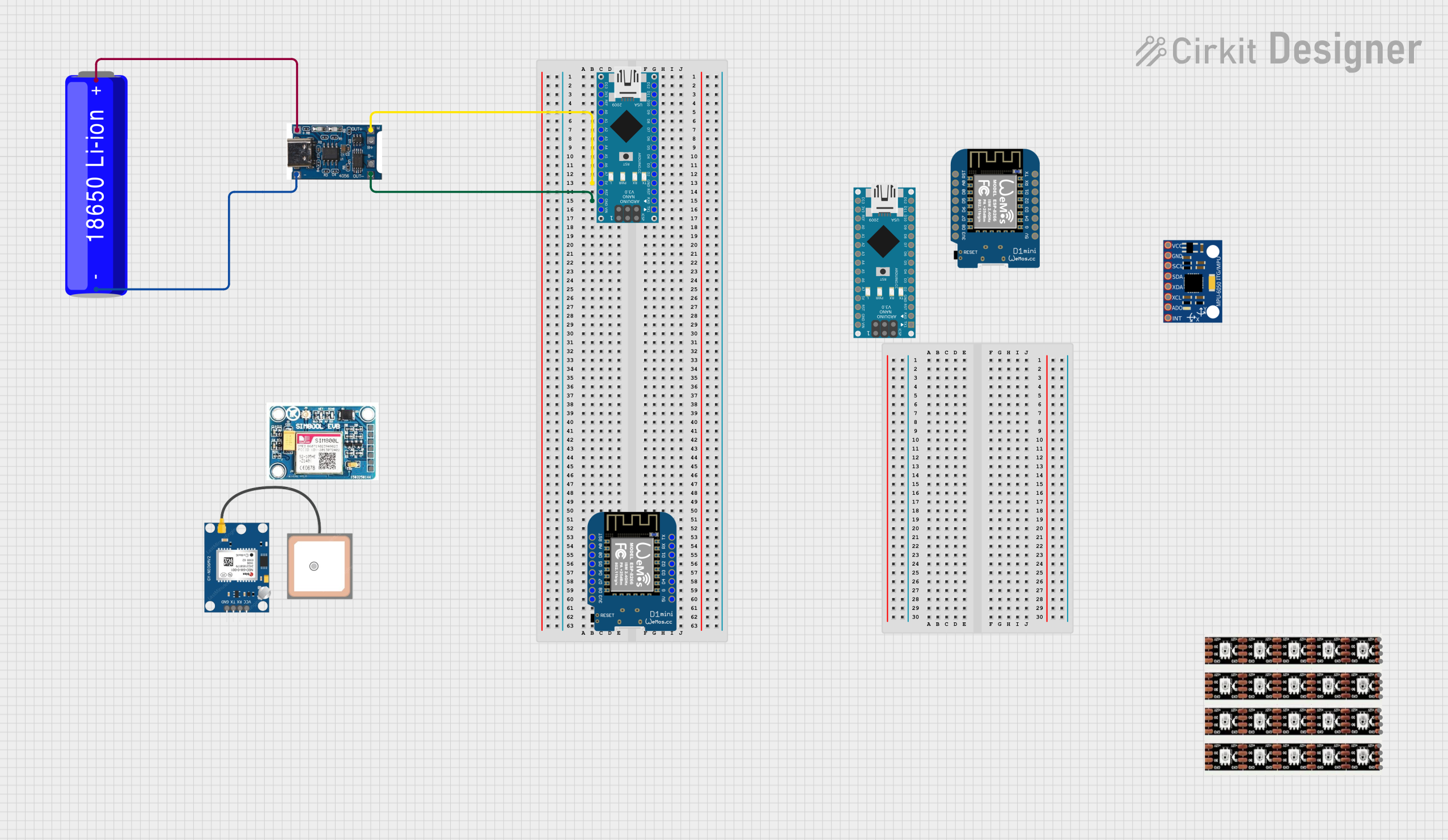
 Open Project in Cirkit Designer
Open Project in Cirkit DesignerExplore Projects Built with SparkFun LiPo Charger Basic - Micro-USB

 Open Project in Cirkit Designer
Open Project in Cirkit Designer
 Open Project in Cirkit Designer
Open Project in Cirkit Designer
 Open Project in Cirkit Designer
Open Project in Cirkit Designer
 Open Project in Cirkit Designer
Open Project in Cirkit DesignerTechnical Specifications
Key Technical Details
- Input Voltage: 4.5V to 6V via Micro-USB
- Charge Current: 500mA (default)
- Battery Voltage: 3.7V nominal (single-cell LiPo)
- Charge Cutoff Voltage: 4.2V ± 1%
- Operating Temperature: 0°C to +50°C
- Indicator: Red LED for charging, green LED for charge complete
Pin Configuration and Descriptions
| Pin Name | Description |
|---|---|
| BAT | Connection to the positive terminal of LiPo battery |
| GND | Ground connection |
| USB | Micro-USB input for power supply |
Usage Instructions
How to Use the Component in a Circuit
Connect the Battery:
- Connect the positive terminal of the LiPo battery to the
BATpin. - Connect the negative terminal of the LiPo battery to the
GNDpin.
- Connect the positive terminal of the LiPo battery to the
Power Supply:
- Plug a Micro-USB cable into the
USBport and connect it to a USB power source.
- Plug a Micro-USB cable into the
Charging Process:
- The red LED will illuminate to indicate that the battery is charging.
- Once the battery reaches 4.2V, the charging will stop, and the green LED will light up, indicating that the charge is complete.
Important Considerations and Best Practices
- Battery Protection: Ensure that the LiPo battery has a built-in protection circuit to prevent over-discharge and short-circuiting.
- Monitoring: Never leave the battery unattended while charging.
- Heat Management: Make sure the charging area is well-ventilated as LiPo batteries can generate heat during charging.
- Cable Quality: Use a high-quality Micro-USB cable to ensure a stable power supply.
Troubleshooting and FAQs
Common Issues
Red LED Not Lighting Up:
- Check the Micro-USB cable and power source.
- Ensure the battery is properly connected to the
BATandGNDpins.
Green LED Not Lighting Up After Charging:
- Verify that the battery is not already fully charged.
- Check if the battery voltage is below the charge cutoff voltage.
Solutions and Tips for Troubleshooting
- Ensure Proper Connections: Double-check all connections to the charger and battery.
- Power Source: Try a different USB power source to rule out power issues.
- Battery Health: Inspect the LiPo battery for any signs of damage or swelling.
FAQs
Q: Can I charge multiple batteries at once?
- A: No, this charger is designed for single-cell LiPo batteries only.
Q: What should I do if the battery gets hot during charging?
- A: Stop charging immediately and disconnect the battery. Allow it to cool down before inspecting for damage.
Q: Can I adjust the charge current?
- A: The default charge current is 500mA. To change it, you would need to modify the onboard resistor, which is not recommended without proper knowledge of electronics.
Example Code for Arduino UNO
This section provides an example of how to monitor the charging status using an Arduino UNO.
// Define the charge status pins
const int CHARGE_PIN = 2; // Connect to the charging indicator LED
const int FULL_PIN = 3; // Connect to the full charge indicator LED
void setup() {
pinMode(CHARGE_PIN, INPUT);
pinMode(FULL_PIN, INPUT);
Serial.begin(9600);
}
void loop() {
// Read the charging status
bool isCharging = digitalRead(CHARGE_PIN);
bool isFull = digitalRead(FULL_PIN);
// Output the status to the Serial Monitor
if (isCharging) {
Serial.println("Battery is charging...");
} else if (isFull) {
Serial.println("Charge complete!");
} else {
Serial.println("Battery is not charging.");
}
// Wait for a second before reading again
delay(1000);
}
Note: The above code assumes that the charging and full charge indicator LEDs are connected to digital pins 2 and 3 of the Arduino UNO, respectively. Adjust the pin numbers as needed for your setup.